This article originally appeared in the September/October 2020 issue of the Ontario Medical Review magazine.
The Canadian Medical Association Awards recognize the dedication, successes and talents of individuals who are making significant contributions to our health and health care. Seven Ontarians were among the CMA 2020 Award recipients whose skills, leadership, and accomplishments in the health care field are being recognized. Following are brief profiles of the Ontario honourees.

Dr. Najma Ahmed
Dr. Najma Ahmed received the Sir Charles Tupper Award for Political Advocacy in recognition of her leadership, commitment and dedication in advancing CMA goals and policies through grassroots advocacy.
There’s a common belief that most gun violence happens in dark alleys and affects mainly people already involved in criminal activities.
Dr. Najma Ahmed knows first-hand that’s not the case. As a trauma surgeon at St. Michael’s Hospital in Toronto, she has treated her share of gunshot wounds. The tipping point for Dr. Ahmed came in July 2018, when a 29-year-old man opened fire on the Danforth, in Toronto’s Greektown, killing two people and wounding 13 others. Dr. Ahmed was called in to work that night to operate on three of the victims.
In the aftermath, Dr. Ahmed knew something had to change. She started speaking out about her experience and through frequent media appearances became recognized as an expert on the effects of gun violence and a vocal advocate for limiting access to guns.
Dr. Ahmed brought together a grassroots group of like-minded physicians that eventually took the name Canadian Doctors for Protection from Guns (CDPG). The group now has nearly a thousand members, who deliver public education and engage with policymakers to advocate for ongoing efforts to reduce gun-related injuries.
“People think that when someone gets shot, they either die or recover and move on with their life, but the reality is so much harder,” says Dr. Ahmed.
Recovery from gunshot injuries can be extremely difficult, requiring months of hospitalization and years of rehabilitation and physiotherapy. Some patients never fully recover, spending the rest of their lives with paralysis, chronic pain and other health problems. Many require ongoing treatment for psychological trauma and persistent fear. Their trauma extends to their loved ones, their communities and even the economy, as many victims are never able to return to work.
Borrowing terminology from the United Nations, CDPG calls for gun control to be reframed as a public health issue, not a property matter.
Dr. Ahmed points to the strong links between access to guns and the prevalence of suicide and points out that while Canada’s overall record on markers of social justice is strong, the country lags behind many developed nations in gun policy and legislation.
CDPG aims to change that. Dr. Ahmed represented the group before the Senate committee debating Bill C-71, which introduced new restrictions on permitted firearms and ownership eligibility. She also participated in a meeting with Prime Minister Justin Trudeau on gun violence.
On May 1, 2020, the government reclassified about 1,500 types of semi-automatic rifles, some previously used in mass shootings, as prohibited. The CDPG is now working to get Bill C-71 strengthened and to advocate for a national strategy for semi-automatic handguns.
“We still have a long way to go, but I’m incredibly proud of what we’ve been able to achieve and the support we’ve received from across the country,” she says.
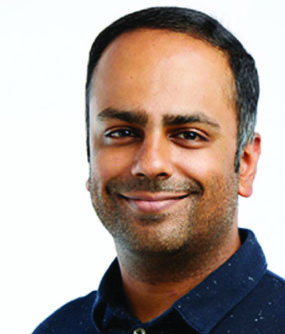
Dr. Naheed Dosani
Dr. Naheed Dosani received the CMA Award for Young Leaders (Early Career) in recognition of his exemplary creativity, initiative and commitment to making a difference at the local, provincial or national level.
During his final year of residency at the University of Toronto, Dr. Naheed Dosani learned a tough lesson: despite the strengths of Canada’s health care system, many people fall through the cracks.
Dr. Dosani was on rotation at a shelter when he met Terry, a homeless man dying of cancer. Dr. Dosani earned Terry’s trust and developed a pain management plan that would help ease his suffering during the final stages of the disease. But that plan was never used, because Terry was found dead the next day. He had overdosed on the only pain relief he knew: alcohol and street drugs.
“That was a real turning point for me,” says Dr. Dosani. “I realized that when it comes to palliative care access for the homeless and vulnerably housed, there’s a huge equity gap.”
To address that gap, Dr. Dosani approached Toronto’s Inner City Health Associates (ICHA) with an idea to expand its programming. In July 2014, after completing residency, he launched the Palliative Education and Care for the Homeless (PEACH) program.
PEACH now delivers community-based, trauma-informed palliative care 24/7 — at shelters and on the streets — using a first-of-its-kind mobile unit. The goal: to provide accessible care to society’s most vulnerable and marginalized people.
“PEACH works because we are collaborating in ways that health and social service systems usually don’t,” says Dr. Dosani, explaining how PEACH brings together palliative care providers, community care providers, housing agencies, hospice volunteers, case management providers and others. “Only by doing so can we break down the silos that marginalize the people we work with.”
The PEACH model has been replicated in several communities across Canada. At the University of Toronto, a stint on the front lines with the PEACH team is a core rotation for palliative care residents. In 2019, Dr. Dosani established the Healing Circles program at PEACH: this program offers group sessions that help staff deal with issues of grief and bereavement when a patient dies under their care.
Even as PEACH expands, it remains focused on its mandate: to address the emotional and psychosocial pain and isolation that marginalized people at the end of life may experience. Its Good Wishes program looks to bring comfort and joy by granting special wishes for patients.
“I care for people who are so often stigmatized and thought of as lesser humans, but they’re actually my heroes,” Dr. Dosani says.
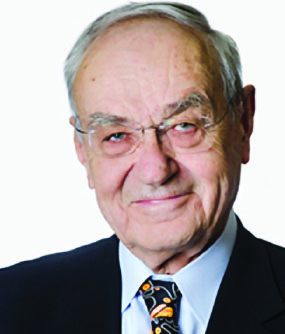
Dr. Vladimir Hachinski
Dr. Vladimir Hachinski received the F.N.G. Starr Award in recognition of his outstanding and inspiring lifetime achievement.
Fifty years ago, there was no treatment available for strokes. Doctors in the United States had tried to establish acute stroke units, but the lack of successful outcomes soon forced them to close.
That wasn’t acceptable to neurologist Dr. Vladimir Hachinski. Early in his career, he teamed up with a colleague, Dr. John W. Norris, and they devoted themselves to caring for and studying stroke patients, establishing what would become the world’s first successful acute stroke unit out of Sunnybrook Hospital in Toronto. Dr. Hachinski and his partner ended up defining a protocol for early intervention complemented by early rehabilitation that remains the standard of care for strokes today. The rehabilitation component of their work was led by Josephine Somerville.
Dr. Hachinski’s clinic first focused on younger patients, presuming they might have higher chances of success. But he and Dr. Norris found themselves unwilling to turn away anyone who needed their help. They were soon conducting meticulous examinations of every patient who came to their door.
That deep effort paid off because it led them to see that early intervention was critical to recovery. They established protocols that could be applied as soon as possible after a stroke to improve outcomes dramatically.
The other success factor, Dr. Hachinski realized, was awareness. Taking his lead from previous campaigns on the signs and risks of heart attacks, he coined the term “brain attack” for strokes — reinforcing the urgency of getting medical attention as soon as the warning signs present, instead of waiting until a full stroke occurs.
Dr. Hachinski and his colleagues also identified links between strokes and heart conditions and found that strokes can increase the incidence of certain types of dementia: it may be possible to prevent some people from developing dementia by preventing them from having strokes.
Today, Dr. Hachinski and his team are looking into the environmental factors that affect stroke risk and dementia, and are putting together a proposal for funding in hopes of expanding their research and methods.
“Over a 12-year period, we saw a 32% decrease in stroke incidence and a 7% decrease in dementia cases in Ontario,” he says. “We would love to be able to isolate the sum of little things that make the biggest difference so we can extend those same results across Canada.”
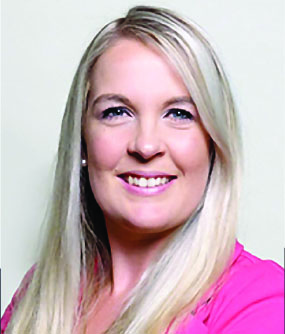
Dr. Anthea Lafreniere
Dr. Anthea Lafreniere received the CMA Award for Young Leaders (Resident) in recognition of her exemplary dedication, commitment and leadership in political service, education and research.
From her first year in medical school, Dr. Anthea Lafreniere was drawn to the system side of medicine, recognizing that better health outcomes are influenced by many factors beyond the point of care. That interest spurred her to join the Canadian delegation at the International Federation of Medical Student Associations’ meeting in Santiago, Chile, in 2013.
Advocating for patient empowerment is a particular area of focus for Dr. Lafreniere — one that led to her involvement in the development of MyPathologyReport.ca. A fellow resident was working on an online resource to empower patients by helping them understand their own diagnoses and pathologies, and asked Dr. Lafreniere to join the project. As a researcher and communications lead, she engaged with patients and ensured research methodologies were sensitive to their needs.
Today, MyPathologyReport.ca is widely used across Ontario, integrated directly with several electronic medical record systems to make patient access even easier.
While studying at the University of Ottawa, Dr. Lafreniere joined several committees at the Canadian Federation of Medical Students. It didn’t take long for her to become President in 2015.
She has since served on the boards of multiple medical organizations including the Canadian Resident Matching Service, the Canadian Medical Association and Resident Doctors of Canada (RDOC). She is the past president of the Professional Association of Residents of Ontario (PARO).
In her roles with PARO and RDOC, she has advocated tirelessly for equity and fairness for Ontario’s 5,500 residents, work that has become even more critical during COVID-19. She was part of the negotiating team for the 2019 resident collective agreement, ensuring the contract included the best possible working conditions, training and transitions for all residents.
Dr. Lafreniere says her leadership experience has given her a broader, system-level view and allowed her to approach research in her specialty — anatomical pathology — in a way that accounts for more of the medical system as a whole.
“It helps me step out of the clinical bubble and engage with people much more than we anatomical pathologists usually do,” she says. “But my decisions are still informed by clinical experience.”
When her residency is over, Dr. Lafreniere plans to complete a fellowship in pediatric pathology but has no intention of giving up leadership roles.
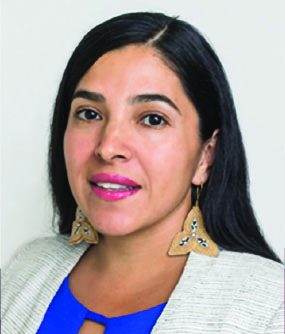
Ms. Elisa Levi
Elisa Levi received the Dr. Brian Brodie Medical Learner Leadership Award in recognition of her exemplary dedication, commitment and leadership as a medical student.
Elisa Levi has spent her entire working life seeking ways to make a difference. Professionally, she started out in 2002 as a registered dietitian, has taken on several leadership roles with health-focused organizations, launched her own independent consulting firm, and today is midway through medical school.
She sees a close connection between her original degree and medicine: both are mechanisms for upstream investment to improve the health of people. Up until now, she has focused on supporting the health of Indigenous populations.
“Most physicians move from direct care practice to the systems level. I’m going in the other direction,” she laughs. As an Anishinaabe, a member of the Chippewas of Nawash Unceded First Nation, with roots in Elsipogtog First Nation, she says that “there is significant opportunity to improve health equity that is grounded in Indigenous world views.”
Over the years, Levi has worked across Canada leading multisectoral collaborations developing culturally safe initiatives while maintaining a connection to nutrition. Just before starting medical school, she helped develop First Nations guiding principles for the use and implementation of Canada’s new food guide.
More broadly, she’s served in paid and volunteer roles with The Circle on Philanthropy and Aboriginal Peoples in Canada and as a board director for the Toronto Board of Health, the Anishnawbe Health Foundation, Red Sky Performance, the ONEXONE Foundation and the Canadian Partnership Against Cancer. She was part of the team that developed the first Indigenous cancer strategy within a cancer agency. As a private consultant, she focuses on food systems consulting and funding for Indigenous communities across the country. There has been a little more flexibility in the transition from clerkship to virtual learning during COVID-19, which has allowed Elisa to help launch the Indigenous Peoples Resilience Fund.
“No matter what I’m doing, I always try to build relationships,” she says. “A key part of any project is finding a path, resolving conflicts and facilitating change based on strengths instead of focusing on deficiencies.”
After she graduates in 2021, Levi plans to practise as a family physician and work directly with patients in a rural setting, possibly in her home community on the Bruce Peninsula. And she’ll keep working on issues of population health, health equity and nutrition.
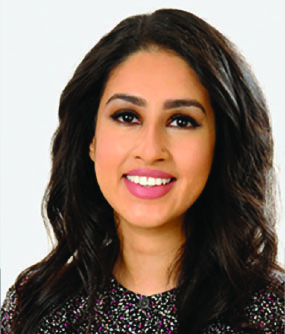
Ms. Niharika Shahi
Niharika Shahi received the CMA Award for Young Leaders (Student) in recognition of her exemplary creativity, initiative and commitment to making a difference at the local, provincial/territorial or national level.
Niharika Shahi first learned about social determinants of health and their impact on health outcomes as a summer student working at the Thunder Bay Regional Health Research Institute.
“I realized there are so many factors that affect population health,” she says. “And that Northern communities face different factors than other communities do. It inspired me to go into medicine – with a focus on targeting those determinants to improve health in the North.”
Ms. Shahi joined Compass North Student-Led Health Outreach in her first year at the Northern Ontario School of Medicine (NOSM). Compass North provides key services to underserved populations in Thunder Bay, including vaccination clinics and health promotion workshops.
While pursuing her interest in addressing the opioid crisis in Northern Ontario, Ms. Shahi noticed the NOSM curriculum didn’t include enough training in handling opioid overdoses. She arranged for Compass North to collaborate with a local needle exchange program to provide workshops on how to administer naloxone. Originally intended for NOSM students, the workshops are now offered to the public.
She partnered with the Lakehead Public School Board and local psychiatrists to develop workshops for staff working with Indigenous youth facing mental health challenges. She has also spearheaded efforts to educate local health care professionals about how to recognize potential victims of human trafficking.
“I grew up in this community, and it’s important for me to do everything I can to ensure people have access to the health care they need,” she says.
Ms. Shahi’s advocacy also extends to her fellow medical students in the North. As chair of northern and rural medical student engagement for the Ontario Medical Students Association, Ms. Shahi advocated for better access to distant events and participated in writing a position paper that was submitted to the Canadian Federation of Medical Students. As a result, most big conferences and important talks are now live-streamed.
She plans to complete a radiology residency in Hamilton and then return to serve her community. In the meantime, she plans to keep advocating for Northern interests.
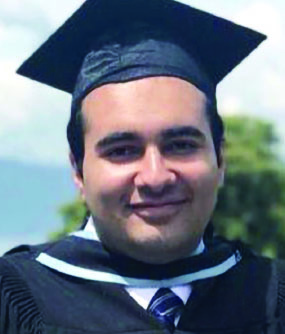
Mr. Mohammad Asadi-Lari
Mohammad Asadi-Lari received the Posthumous Singular Award of Merit in recognition of his exemplary leadership, initiative and commitment to making a difference at the local, provincial/territorial or national level.
On January 8, 2020, Ukraine International Airlines flight 752 was shot down outside of Tehran. Mohammad Asadi-Lari and his sister Zeynab were two of the 176 people on board, returning to Canada after visiting their parents.
Colleagues remember the second-year University of Toronto MD/PhD student as an exceptional young leader with a passion for population health, science education and innovation in health care.
“Mohammad had big ideas and an incredible ability to action them quickly and in collaboration with others,” says Dr. Alexandra T. Greenhill, a former mentor of Asadi-Lari and chair of the Canadian Association of Physician Innovators and Entrepreneurs (CAPIE). “He balanced his obligations to patients with a drive to innovate and advocate for improving the health of society overall.”
Building Strong Scientific Communities
As an undergraduate student at the University of British Columbia, Asadi-Lari co-founded STEM Fellowship: a grassroots, youth-led not-for-profit that uses mentorship and experiential learning (such as data science workshops) to expand science, tech, engineering and math (STEM) education starting in high school. The fellowship flourished under his leadership and now boasts a network of more than 300 volunteers in 60 secondary schools and 22 universities.
In 2019, Asadi-Lari co-founded CAPIE, the first national network connecting physicians interested in innovation to transform health care. As vice-president, he was working on a sustainability strategy for the organization for the next five years, with the goal of developing CAPIE into a key health care innovation hub that supports physicians at all stages of their career to use their ideas and know-how to improve health care.
Remembering a Rare Talent
As a young innovator and entrepreneur, Asadi-Lari was often a guest speaker and moderator at national and international conferences. He won several prestigious awards, including the Sandra Banner Student Award for Leadership, the 3M National Student Fellowship, the National Chemistry Olympiad and a Governor General’s Bronze Medal. Outside of medicine, Asadi-Lari was a strong advocate for youth civic engagement.
“We will truly miss his awesome energy and can-do attitude,” says Dr. Greenhill.
For a complete listing of CMA 2020 Award recipients, or to nominate a health leader for a CMA 2021 Award, visit the CMA website.